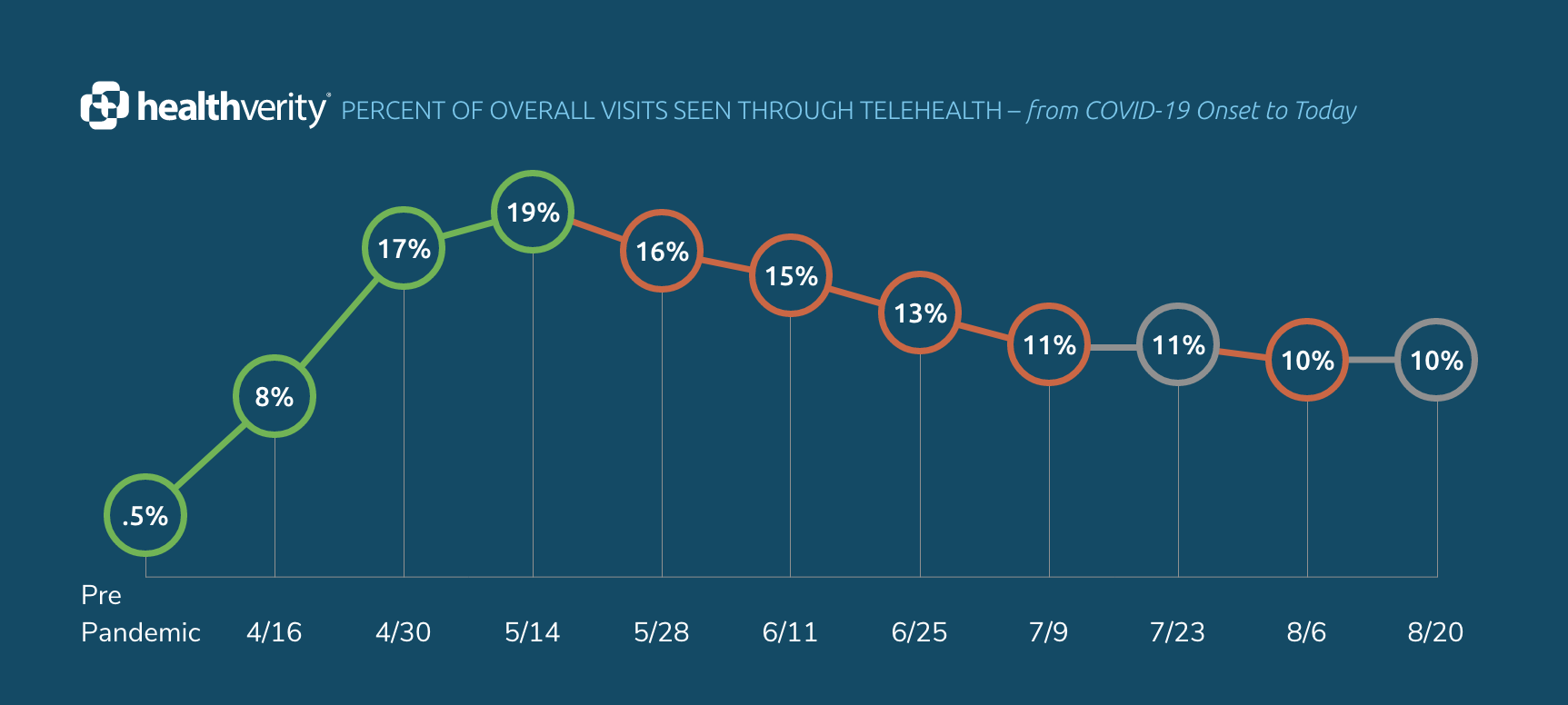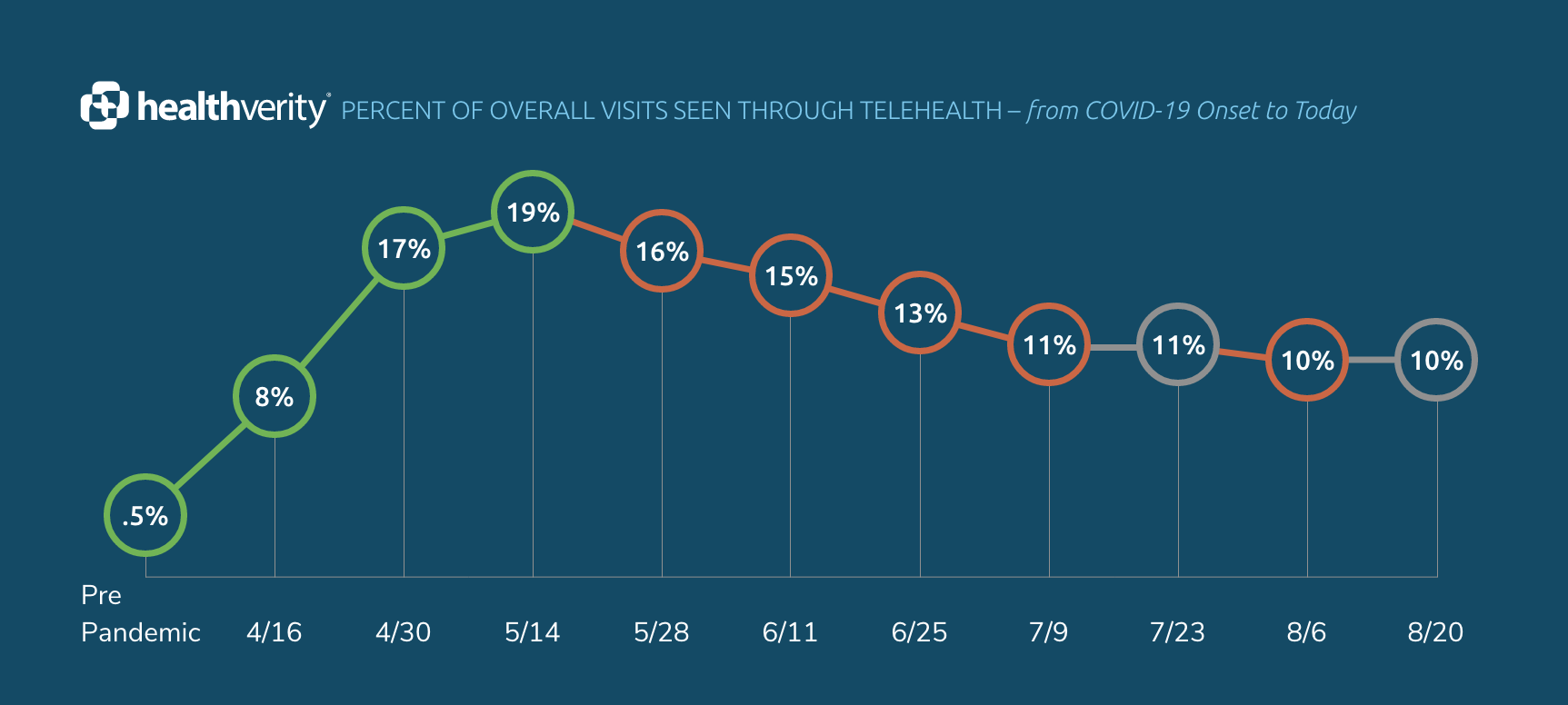Technology has impacted all aspects of modern life, making many processes more efficient and widely accessible. Telehealth, one of the modern technologies of the healthcare industry, has been around long before the COVID-19 pandemic, but despite having the potential to increase access to and improve the quality of care, it was not heavily adopted. Prior to the onset of the coronavirus in the US, patients cited concerns about privacy, technological accessibility and general uncertainty as barriers to telehealth. As government mandated quarantine and social distancing requirements closed doctors offices nationwide, the pandemic provided an opportunity for telehealth to take the main stage.
One of the goals of telehealth is to increase accessibility of care1. Telehealth brings convenient, quality care to patients in rural communities and those without reliable methods of transportation. Additionally, telehealth services improve communication and coordination of care between clinicians and the patient as well as provide opportunities to better support self-management of care.
Telehealth Adoption Trends
The pandemic has challenged the healthcare industry to adapt and find new ways to continue to treat people while reducing clinician exposure to potentially ill patients, preserving PPE and minimizing the impact of patient surges on healthcare facilities. Telehealth services have removed many accessibility barriers to provide necessary care to patients while minimizing the transmission risk of COVID-19 to other patients and clinicians.
As the world begins to adapt to a new standard of living, understanding the broader picture of healthcare is more important than ever. Home to the largest healthcare data ecosystem in the US, HealthVerity has been able to glean valuable insights from the start of the pandemic to better understand how this healthcare crisis has affected both patients and providers. The HealthVerity Patient Confidence Index (HVPCI) tracks weekly medical claims and provides a bi-weekly update of how many non-COVID patients are seeing their doctors by means of both traditional and telehealth visits. The HVPCI aggregates this data across 20 key therapeutic areas, dating back to the beginning of March, when the pandemic first took hold in the US.
As physician offices closed and means of traditional patient care were no longer an option, telehealth saw unprecedented adoption levels. The HVPCI captured the uptick in telehealth visits, both by age group and specialty, demonstrating the trend since the onset of the pandemic.

During the height of the pandemic, all age groups saw at least a 1,500% increase in telehealth visits with the 65+ age group increasing an astonishing 5,596.8%. As physician offices around the country begin to reopen, most patients are returning to the baseline number of telehealth visits, however the 65+ age group has continued to regularly use telehealth services, suggesting this may be the new normal for these patients. While this may not be surprising, as this age group is the most at risk for severe cases of COVID-19 and should therefore continue to minimize exposure, this does negate any doubts about issues with technological adoptions and other potential limitations in older populations. The graph above displays the HVPCI data from the start of the pandemic, across 20 different specialties.
Notable callouts:
- Pediatrics, behavioral health & social services, internal medicine and family practice/gen practice saw the highest number of telehealth cases across all age groups.
- Psychology and neurology visits have steadily hovered around that of the height of the pandemic for all age groups.
Specialties and age groups that saw the highest increase at the height of telehealth thus far: - Ophthalmology: ages 0-17 increased 34,200%, ages 65+ increased 28,290%
- Preventive medicine: ages 65+ increased 20,550%
- Endocrinology: ages 0-17 increased 18,700%
- Rheumatology: ages 51-64 increased 18,591%, ages 65+ increased 18,151%
In the pre-COVID-19 world, many knew that telehealth visits were an option, but due to regulations and general patient hesitancy, it did not gain a lot of momentum. Quarantine guidelines and social distancing measures provided a serendipitous opportunity for patients to consider telehealth services as a viable option. As doctors offices and healthcare facilities begin to open back up, the same question is on every payer and clinician’s mind: “Now that the world has gotten a taste of telehealth, will patients continue to use it?”
Telehealth in the Post-Pandemic World
Moving forward, it feels as though the world will forever be divided into the pre-, mid-, and post-COVID way of life. As we begin to think about healthcare in these terms, several factors will come into play for the future of telehealth.
Patient and government willingness
Although the pandemic seemingly brought life to a halt, the need for patient care persisted. This unique challenge pushed many clinicians and patients that would have otherwise been reluctant or disinterested in using telehealth, to take their care virtual. Previously, regulations around the deployment of telehealth created a hurdle in the broad adoption of virtual care. In order to enforce HIPAA regulations and confidentiality laws, restrictions were in place around how visits were conducted and the management of healthcare data.
Recent policy changes have reduced these barriers allowing visits to take place through whatever means necessary, whether it be FaceTime or a Zoom meeting2. While these barriers have temporarily been removed to make care more accessible, it is to be determined what kind of hurdles these regulations will pose for patients and clinicians in the post-pandemic world. Once doctors offices begin to open and traditional visits are again an option, will patients and clinicians continue to opt for remote care?
Payers
Prior to the pandemic, the payment structure was a serious disincentive for engaging with telehealth services. While states required insurers to cover activities related to telehealth, they did not stipulate payment parity for telehealth and in-person care3 and Medicare coverage was extremely restrictive4. During the pandemic, payers have changed their reimbursement structures to offer payment parity, and Medicaid programs have removed their limitations around originating sites, geography, eligible practitioners and services and qualifying technology that were in place5,6.
While many major payers have confirmed these measures will stay in place for the remainder of the pandemic, they will need to be revisited once the threat of COVID-19 has dissipated and there are no longer extenuating circumstances. Experts have forecasted that the regulatory exceptions The Centers for Medicare & Medicaid Services (CMS) have issued will likely expire and regulations will return to the pre-pandemic state until long term coverage and incentives are determined. Because Medicaid programs are administered at the state level and telehealth coverage will therefore vary7, factors like cross state payments will be a hurdle in determining coverage plans. Payers will have to find the line between providing incentives to maintain the adoption of telehealth, and ensuring that reimbursement reflects the cost of services, while not over incentivizing, as more patients can be seen via telehealth than traditional care.
Licensing
Telehealth care has served as a disruptor in a highly regulated industry. Previously, physicians could not treat patients outside of their state, however during the pandemic some states have already removed these licensing requirements to increase access to care. Even with this regulatory rollback, other restrictions like the prescription of controlled substances will continue to be a hurdle for remote care. Prior to the pandemic, prescriptions for narcotics and other controlled drugs could be written through the internet, but the exceptions were extremely narrow. During the pandemic, these restrictions were eased allowing patients to be prescribed via the internet, but these rules will likely revert to pre-pandemic regulations until the regulations can be revisited.
Are we meeting the goals of telehealth?
During these extraordinary times of social distancing, telehealth has provided low-risk urgent care for conditions unrelated to COVID-19 as well as opportunities to assess and refer patients to specialists as needed. Additionally, the increased access to mental and behavioral health through telehealth services during these difficult times of isolation and increased anxiety across the nation has been critical for mental wellness.
While the main goal of telehealth is to increase accessibility, the most pertinent potential constraint is the technology required for a virtual visit, whether it’s the device, internet access, connectivity issues, or general confidence operating technology. Amongst these logistical concerns are also valid reservations around privacy, cultural acceptance, the patient’s comfort level discussing sensitive matters virtually, as well as the potential for essential information to be left out of a patient’s medical history. While these limitations exist and remain a consideration for more general adoption, patient data from the last 150 days has proven that telehealth may be a constant fixture in the healthcare system post-pandemic.
Article Sources
- Mayo Clinic. (2020, May). Telehealth: Technology meets health care. Retrieved from https://www.mayoclinic.org/healthy-lifestyle/consumer-health/in-depth/telehealth/art-20044878
- Mary Ann Liebert, Inc., publishers Coronavirus Resource Center. (2020, May). Telemedicine and the COVID-19 Pandemic, Lessons for the Future. Retrieved from https://www.liebertpub.com/doi/10.1089/tmj.2020.29040.rb
- Center for Connected Health Policy. (2020). State Telehealth Laws and Reimbursement Policies Report. Retrieved from https://www.cchpca.org/telehealth-policy/state-telehealth-laws-and-reimbursement-policies-report
- US Social Security. (2020). Compilation Of The Social Security Laws Special Payment Rules for Particular Items and Services. Retrieved from https://www.ssa.gov/OP_Home/ssact/title18/1834.htm
- US Congress. (2020, June). S.3548 - CARES Act. Retrieved from https://www.congress.gov/bill/116th-congress/senate-bill/3548/text
- US Department of Health and Human Services Centers for Medicaid and Medicare Services. (2020, April). Medicare and Medicaid Programs; Policy and Regulatory Revisions in Response to the COVID–19 Public Health Emergency. Retrieved from https://www.govinfo.gov/content/pkg/FR-2020-04-06/pdf/2020-06990.pdf
- Center for Disease Control and Prevention. (2020, June). Using Telehealth to Expand Access to Essential Health Services during the COVID-19 Pandemic. Retrieved from https://www.cdc.gov/coronavirus/2019-ncov/hcp/telehealth.html#edn6




